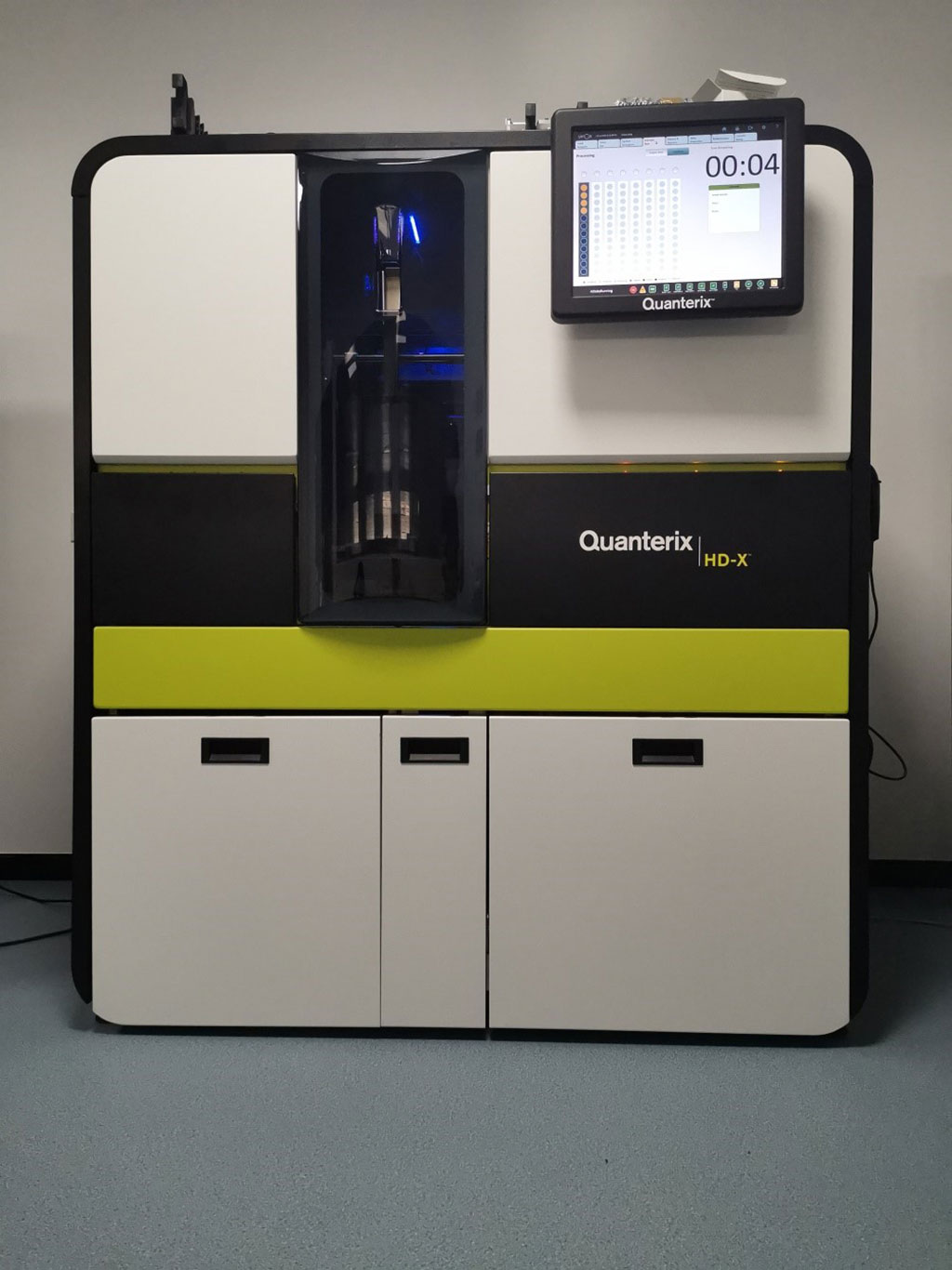Alzheimer's Progression Tracked with Blood Biomarkers
By LabMedica International staff writers
Posted on 28 Jan 2021
Alzheimer disease (AD) is a neurodegenerative disorder characterized by the accumulation of amyloid-β (Aβ) plaques and neurofibrillary tangles of hyperphosphorylated tau in the brain. These neuropathological changes are believed to take part in a cascade of events that result in a characteristic neurodegeneration pattern followed by progressive cognitive impairment.Posted on 28 Jan 2021
Tracking neurodegenerative changes in vivo is important for monitoring AD progression. Recent evidence suggests that blood-based biomarkers might be useful to detect AD pathology, potentially promoting the widespread use of biomarkers in the diagnostic workup of AD and clinical trial screening. Among candidate disease-specific biomarkers in blood, plasma phosphorylated tau at threonine 181 (p-tau181) has shown promise as a marker of disease status.

Image: The Simoa HD-X fully automated immunoassay platform with multiplexing and custom assay capability (Photo courtesy of Quanterix Corporation).
An international team of scientists led by the University of Gothenburg (Gothenburg, Sweden) examined at data from 1,113 participants in the Alzheimer's Disease Neuroimaging Initiative (ADNI) cohort study from 2007 to 2016. The average age of the group was 74 and 89% were white. Overall, 378 people (34%) were cognitively unimpaired and 735 (66%) were cognitively impaired. Of those who were impaired, 537 people had mild cognitive impairment and 198 people had Alzheimer's dementia.
Follow-up blood sampling was performed for up to eight years. Participants had plasma p-tau181 and neurofilament light chain (Nfl) measurements and at least one radiolabeled fluorodeoxyglucose (FDG) PET or structural MRI scan performed at the same study visit. Plasma p-tau181 concentration was measured using a novel assay developed in-house on the single-molecule array HD-X instrument (Simoa; Quanterix Corporation, Lexington, MA, USA), and Plasma NfL concentration was also measured using Simoa technology.
The scientists reported that baseline plasma p-tau181 levels were tied to cognitive decline plus concurrent and prospective neurodegeneration in Alzheimer's-characteristic brain regions on MRI and FDG-PET. Longitudinal changes in p-tau181 paralleled cognitive decline and progression of neurodegeneration in these regions. Plasma p-tau181 and NfL were independently associated with cognition and neurodegeneration in Alzheimer's-vulnerable areas on imaging. Plasma p-tau181 specifically was linked with cognitive impairment and neurodegeneration in people who were Aβ+. Plasma NfL was tied to cognitive decline and neurodegeneration in both Aβ+ and Aβ− groups.
Michael Scholl, PhD, an Associate Professor and a senior author of the study, said, “Our findings have clear and novel implications for these tests both as diagnostic tools and as outcome measures in clinical trials, as we showed that measurement of p-tau181 in blood is a reliable biomarker for Alzheimer's disease specifically and NfL is a reliable marker for neurodegenerative diseases in general.”
The authors concluded that t plasma p-tau181 was an accessible and scalable marker for predicting and monitoring neurodegeneration and cognitive decline and was, unlike plasma NfL, AD specific. The study findings suggest implications for the use of plasma biomarkers as measures to monitor AD progression in clinical practice and treatment trials. The study was published on January 11, 2021 in the journal JAMA Neurology.
Related Links:
University of Gothenburg
Quanterix Corporation














